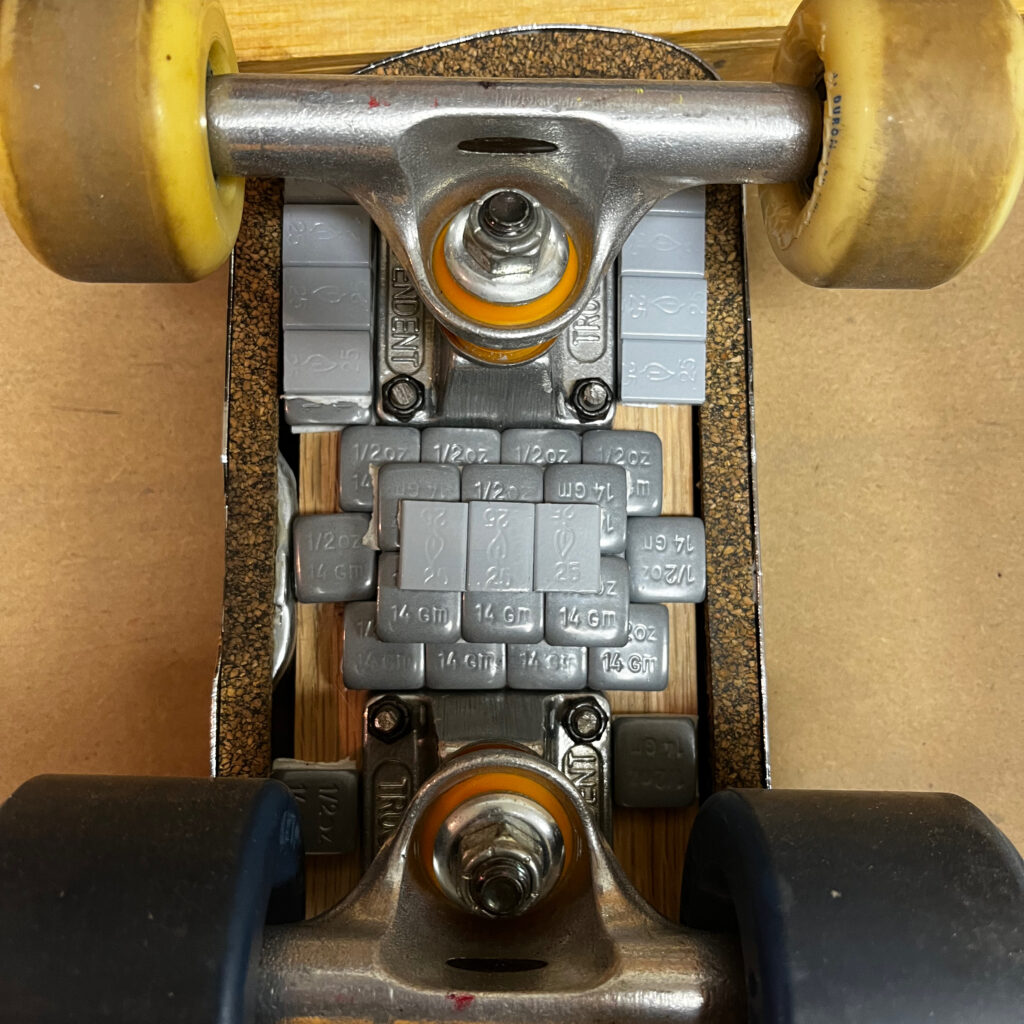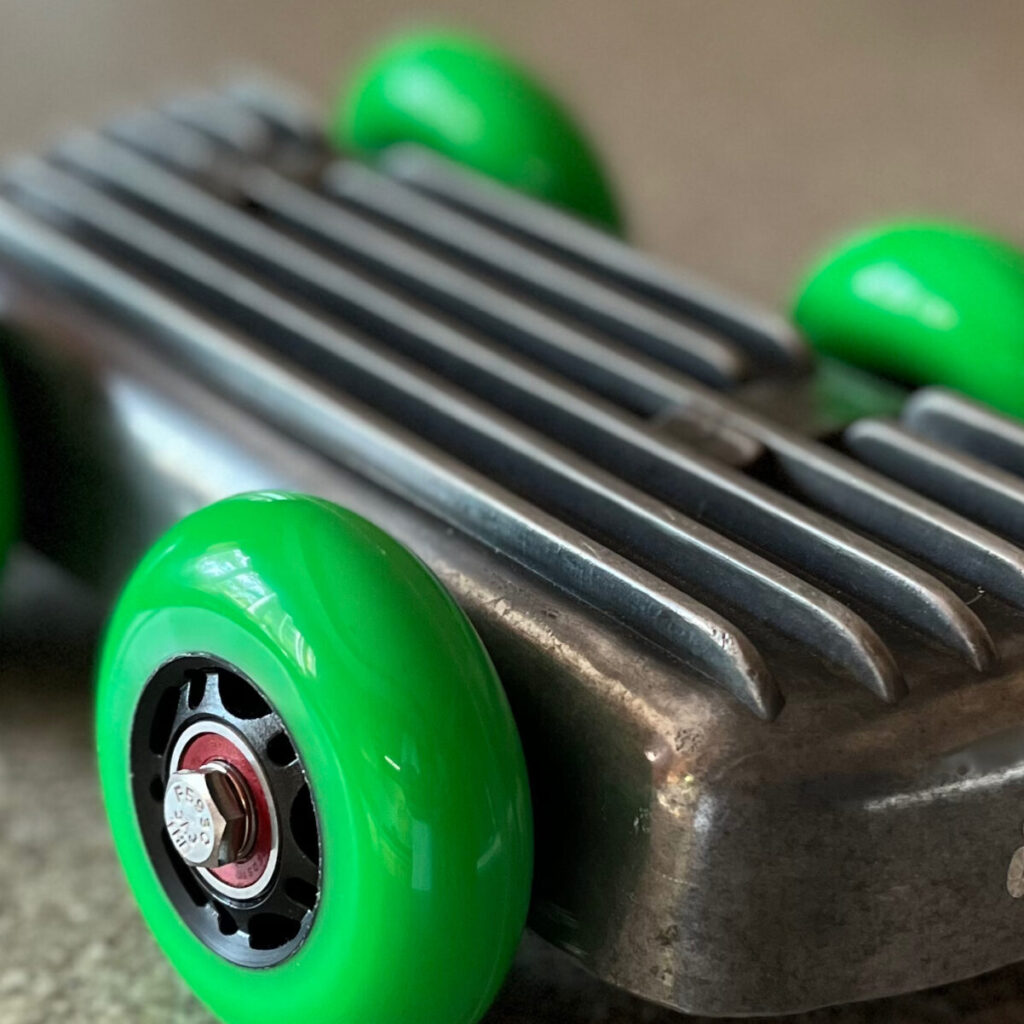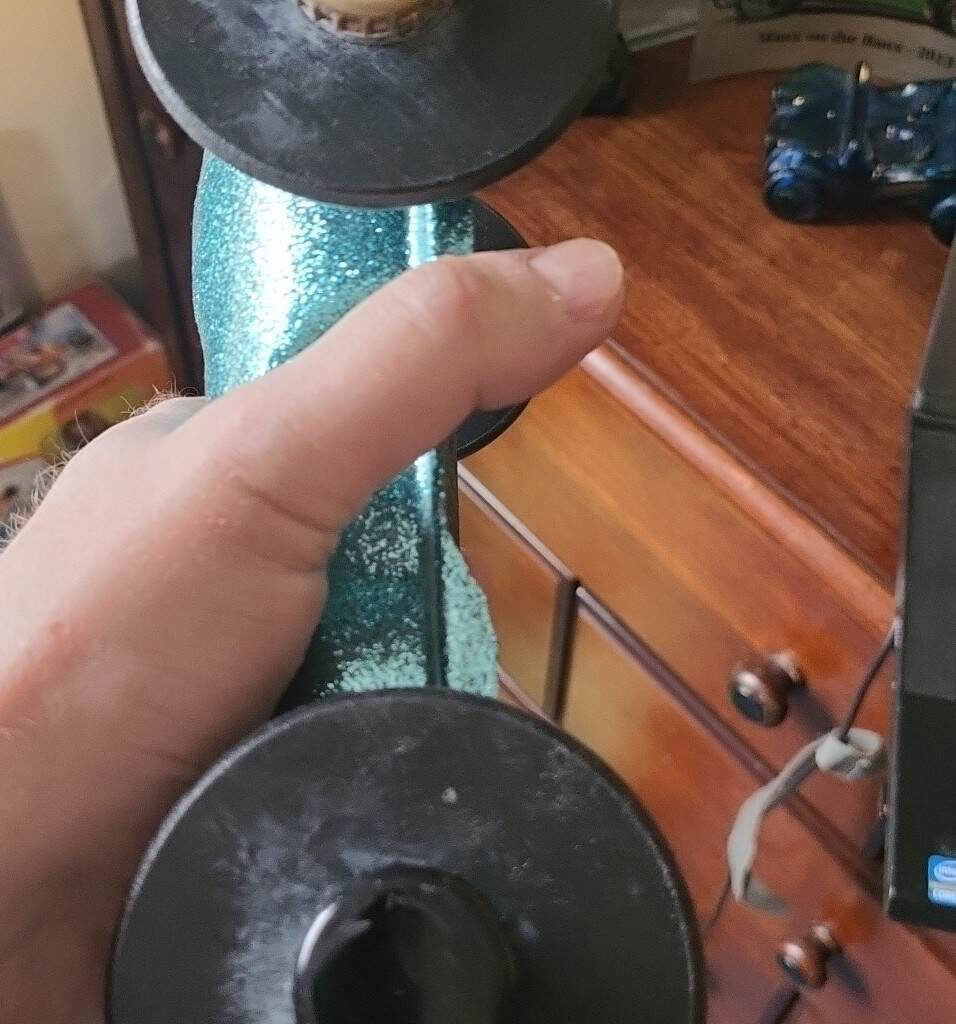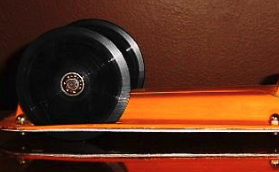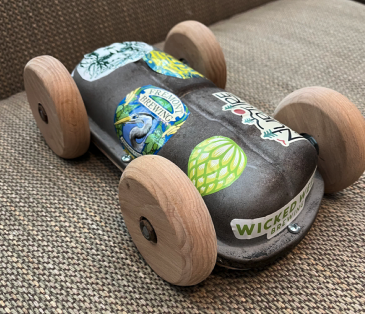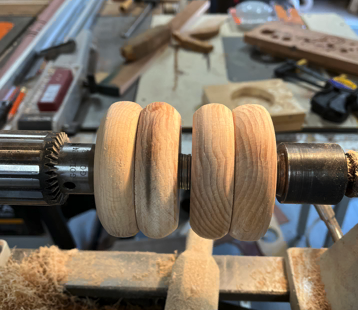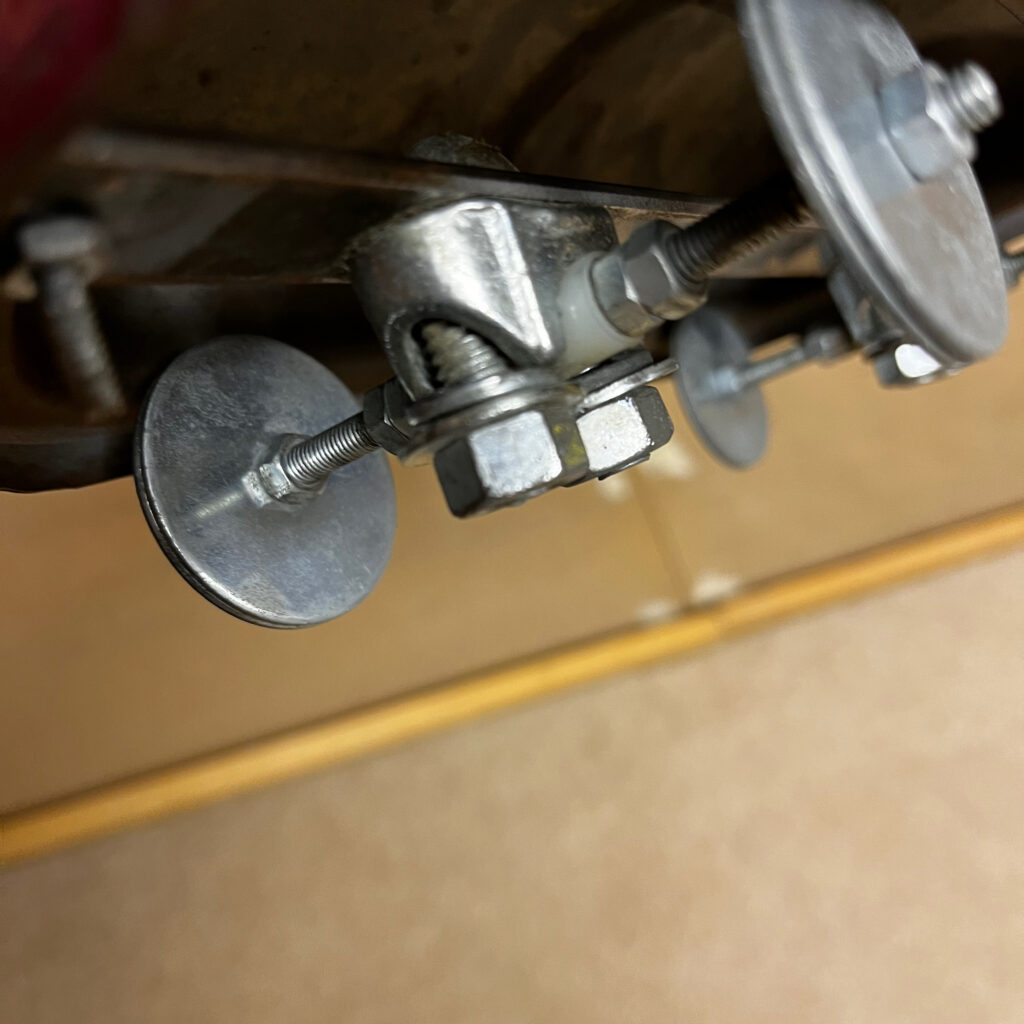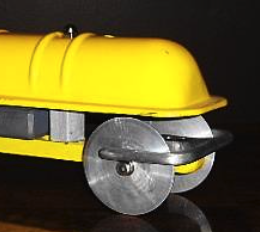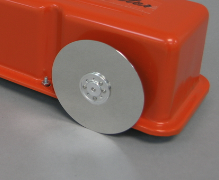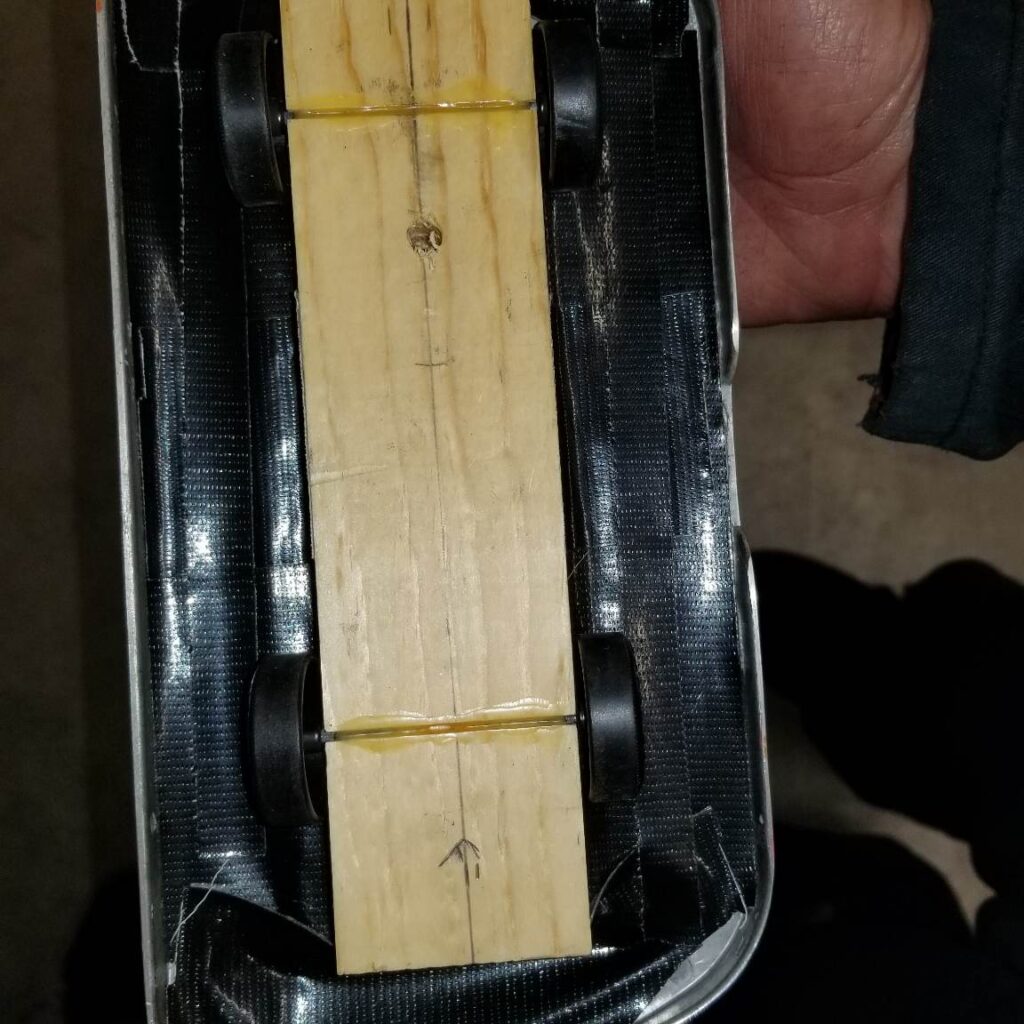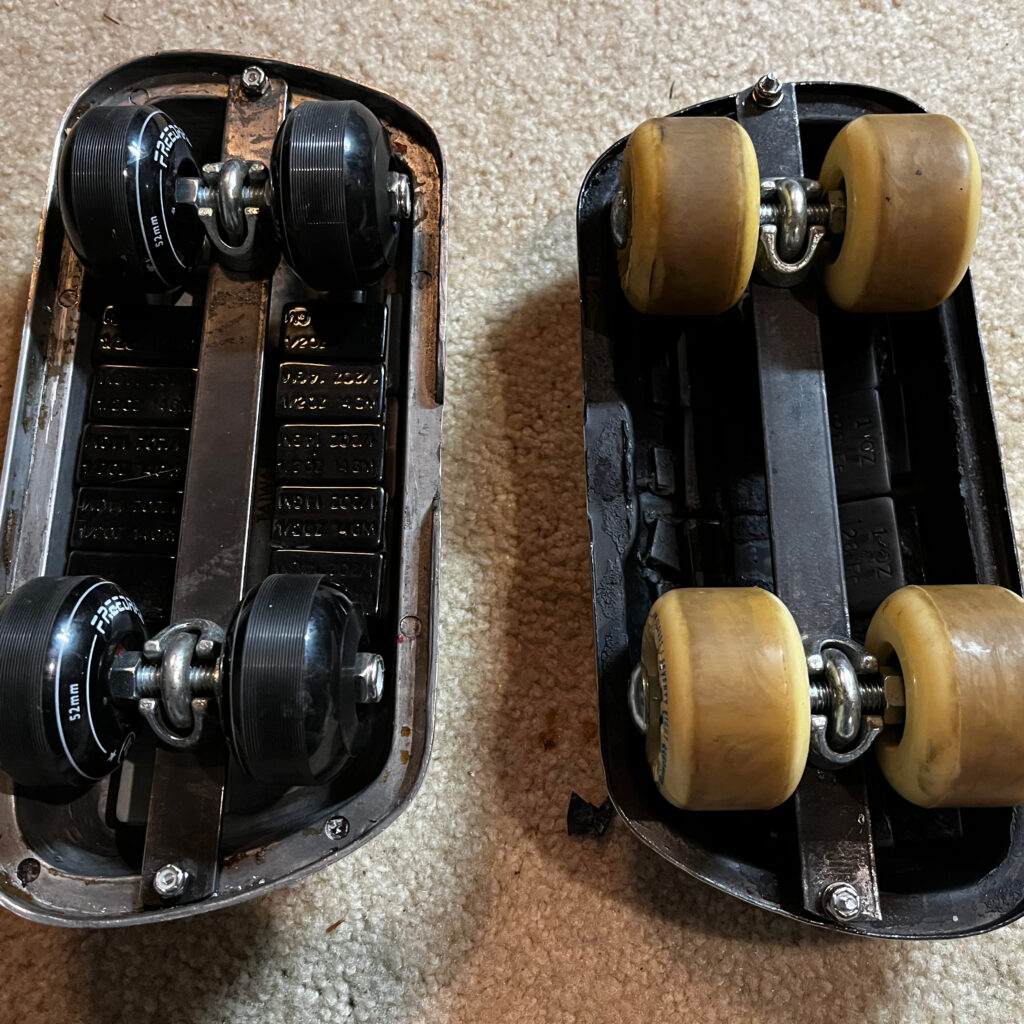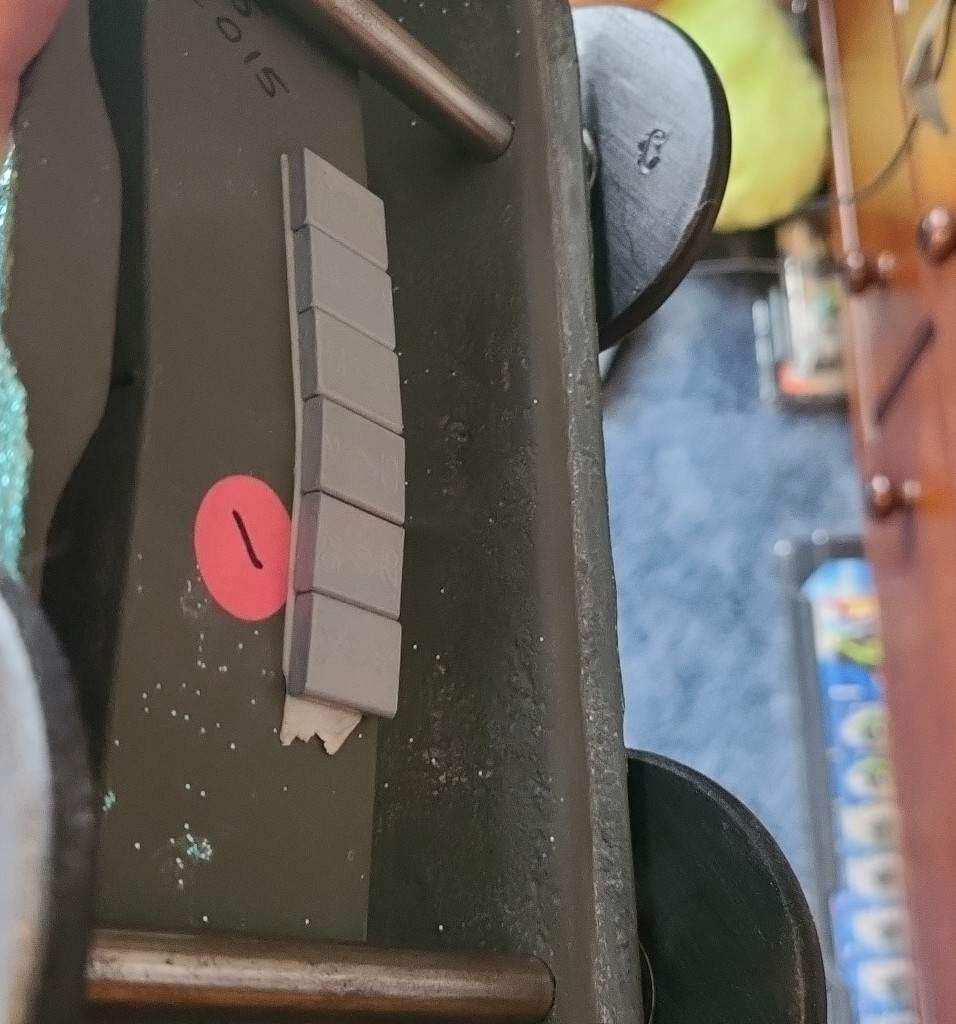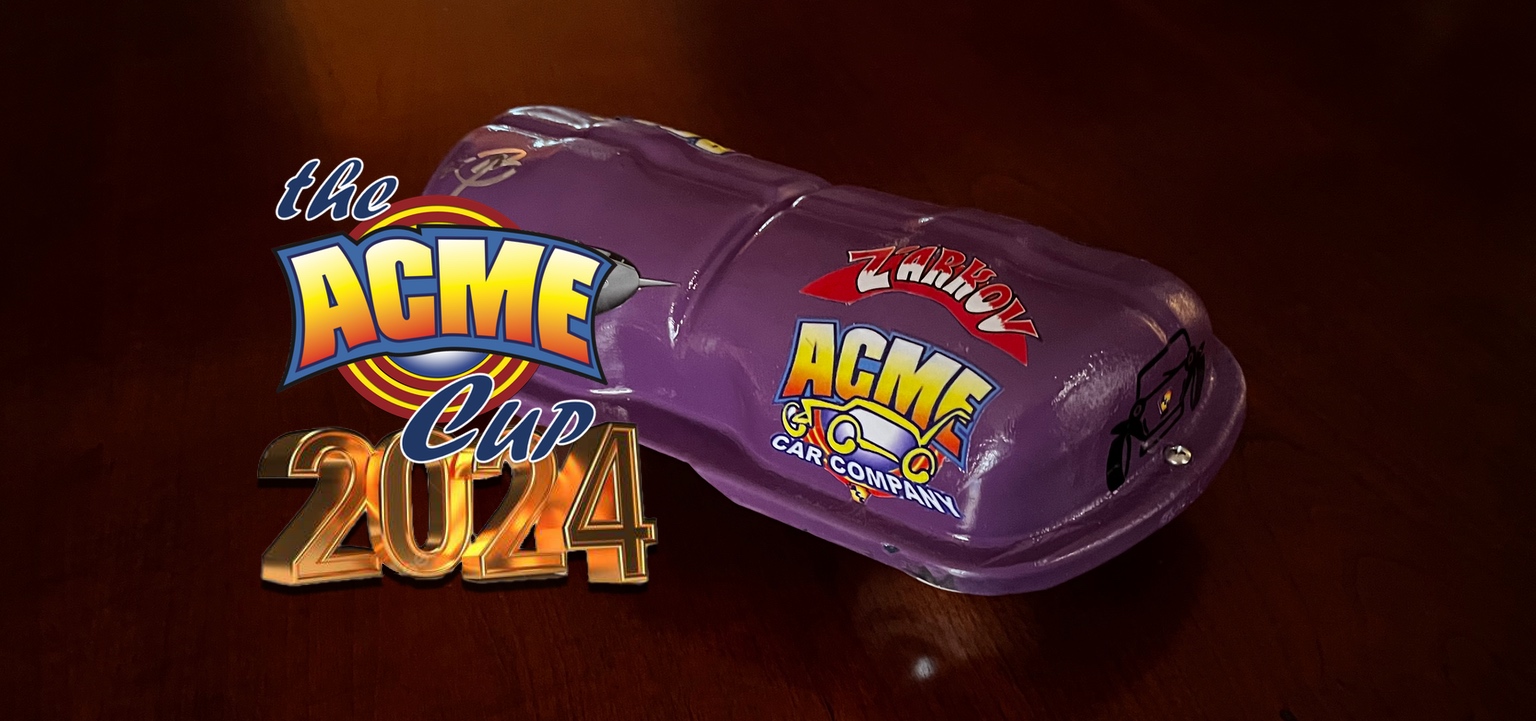
Chassis & Wheels
- Home /
- Chassis & Wheels
Building your Valve Cover Racer
Building your Valve Cover Racer is easier than ever for 2023. We have loosened the requirements for build options for a wide variety of materials to use and for a quick build for the kids to have a car.
Significant rule changes are to do with wheel composition, wheel sizes and wheel types allowed- with only one restrictive build scenario as listed. We have also removed restrictions on aiming devices. So if you have a built-in aiming device for your racer – get creative. Check the CAR Specs page for changes this year. As a suggestion, buy stick on weights (1oz. sizes from Amazon) and try to get the weight of your Valve Cover to as close to 5 overall pounds as possible.
Below we will give some wheel and chassis examples, pros and cons of some build examples with visual references for you to get a car competition ready for the 2023 season at the price point you need.
Wheel Options
A good place to start your build is to figure out what wheels to use, what materials you can use and what works best or maybe what doesn’t work best. The primary restriction for an allowed wheel is that it can NOT be sharpened to a razor or knife’s edge for the safety of the judges and participants. The ACME Cup officials will not allow a wheel, regardless of the material it is made with, to be used if it is deemed sharp and hazardous in competition.
Rubber Wheels (Skateboard or in-Line skate wheels)
In short, any rubber material wheel will not perform well unless protected to not make contact with the side rails. Not so much that it won’t roll fast or will be faster or slower than non rubber wheels…. but when your racer veers into the side rails if it isn’t perfectly running straight, the rubber wheel will catch and slow the racer down or even stop it completely – These wheels when mounted on the outside of the valve cover, almost always perform very badly. If you can get the rubber wheels skinny and small enough (less than 55mm in diameter) to mount on the inside of a standard valve cover that is roughly 4.5″ wide, you can have a very well performing racer with the right bearings combined (the rubber will not make contact with the side rails) – and if the racer does make contact, its the side of the valve cover sliding off the side rails not losing much momentum.
The one exception with outside rubber/skateboard wheels was the first race of 2022 (Carlisle, PA). John Marcinka drove Andy B.’s Skateboard wheel built valve cover to the “WIN”. John’s alignment on that racer was perfect – that Valve Cover completed every race without touching the side rails and won the entire event.
Composite / Hard Compound Plastic Wheels:
Usually homemade from some hard plastic materials, plastic cutting boards, flat bed liner, etc., these wheels when combined with bearings make for a good smooth running wheel. And, if they do make contact with the side rails when mounted on the outside, these are hard enough to “skip” off of the sides and not have the car loose too much momentum affecting overall performance. Trying to make custom wheels with internal bearings is not easy – many builders will not show or tell their secrets for this step. Just cutting a hole in the center of the wheel the same size as the bearing won’t work well. The bearing is not fixed permanently inside the hole and will slide left or right during movement. Looks easier than it is for sure.
There are various build examples of racers that have won and competed successfully with this wheel build. All but one race has been won with wheels of this composition.
Wooden Wheels
Wooden wheels are easier to craft and give lots of options for mounting inside bearings or keeping bearings inside the wheel itself when attached to an axle.
Similar to hard composite wheel construction, when combined with a good bearing, these perform well if made consistent. Making each of 4 wheels exactly round and the exact same shape identical is harder with wood than a composite material and they take more damage when making contact with the side rails, but do “skip” off better than rubber material wheels. Only two cars had wooden wheels in 2022 and did perform well enough for a few class wins.
Metal Wheels (Allowed for 2023)
Metal wheels are now allowed for the 2023 season. Opening up this wheel option by using metal materials give builders and others a lot of options for high performing designs. Builders that have used hard plastic composite wheels, may be modifying their designs to utilize metal wheels for this year.
We have seen simple large washers used as wheels, others have cut round discs out of thicker aluminum sheets…. combined with bearings, this could be a winning combination for 2023.
CD Discs / Computer Hard Drives (Allowed for 2023)
Although not restricted in the past for material composition, these wheel types weren’t used primarily due to their physical diameter size. The 2023 season has increased the wheel diameter size limit to 6″ and these are now options for use this season. However by increasing the allowed wheel size, you’ll still have to have the nose of the racer be less than 3 inches high to be compatible with the starting gate.
The other drawback with CD discs or Computer hard drives, is that they can be brittle and could crack or fail completely with the weight of the racer during speeds and contact with the side rails if not perfectly aligned.
Chassis Types
Chassis types basically the same for 2023 – in some form or fashion you need to mount your wheels/axles to a chassis or direct to the racer body. Below are some chassis examples, some simplistic, some very advanced in design. Many folks will create a wooden chassis to adhere skateboard trucks/wheels. Hard wood bases ¼” or ½” thick are easy and cheap to cut and acquire, any Lowes or Home Depot. Competitive Valve Cover Cars have had chassis made from each of these examples as below:
Pinewood Derby Wood Block and Wheels
This is the quickest and easiest to adapt for a valve cover racer. These can be bought at any Walmart for less than 12 dollars. And they WORK. You are almost guaranteed that they will roll straight, and when you add weights to the racer to close to the 5 pound limit, they are very competitive.
Tim Waild built and drove a pinewood derby chassis racer, painted and decorated in a NY State Police car design, and took 2nd place at the Carlisle 2022 race.
A drawback to this chassis is that the plastic wheels and “nails for axles”, as are all pinewood derby kits, do not hold up well over time with the added weight up to 5 pounds.
Wooden Bottom Chassis
Cutting a wooden chassis based on the outline of the valve cover is a quick way to have a solid bottom to adhere Skateboard wheels to or anything that is easier to mount. The best part about this is that its easy and flexible with attaching an axle system to. Even alignment aids are easier to work with making sure your axles are straight.
The skateboard bottom racer as shown is built with very high end Independent brand trucks, Kryptonics Wheels and Bones Red Bearings. This took first place at Carlisle 2022 and ran clean without side rail contact every race. However, if these wheels make contact with the side rails, the racer comes to a sudden halt and can not finish.
Metal Plate Chassis
Cutting a metal plate for a chassis based on the outline of the valve cover is a quick way to have a solid metal bottom. Precise holes can be drilled to assist alignment, and many options are available for a high performing racer. We have seen multiple racers win with this combination of metal chassis and well engineered composite wheels.
The Machined metal chassis design was built and driven by Tom Iacoboni – This racer is always a tough competitor and a previous winner in the Outer Banks event from a few years ago.
Single Spline / Tunnel Metal Inside
A quick way to create a single chassis tunnel. Grab a 3/4″ metal bar, 1/8″ or 1/4″ inch thick. Measure center of valve cover inside liip, and cut (notch a small angle) out of the low side. Once cut, measure and drill two holes for the front and rear U-shaped wire clamps. See VCR Restoration page for full directions on this chassis style.
Once you get your axles and wheels aligned, so the chassis rolls perfectly straight – tighten the U-shaped wire clamps down as hard as you can (use lock washers) under the nuts on the clamp. Doing so, keeps the axles from moving or angling left or right; this helps the chassis to be true in a straight path while in motion.
Axle Through the Body
The hardest to accomplish – getting both axles perfectly straight requires the use of a drill press / jig to ensure that the holes in the body are perfectly aligned. One small misalignment, and your racer will not drive straight and you’ll be in contact with the sides slowing down on the track.
If you can drill holes so that both axles are “perfectly straight” with each other, you have a good wining combination almost ensured to run without contacting the side rails. The Zarkov racers utilize this with precision and are always in the running for any race win. This racer style is also another previous winner in the Outer Banks event from a few years ago.
Individual Axle - one for each Wheel
A quick and easy method without building a full chassis. Simply drill holes at the same height on each side – you don’t have to worry about alignment (HOWEVER) if your valve cover is not perfectly straight, the wheels will bend with the curve of the body and not run straight, see the photo of the racer with the green in-line skate wheels,… the sides of the valve cover bend in and this created a turned front wheel. This racer never ran straight and couldn’t make it down the track. Box type of valve covers are best for this design, not the rounded EMPI types.
The racer with the white composite wheels was built and raced by Vincent Parisien and took 2nd place at the Manx on on the Hudson event in 2022.

